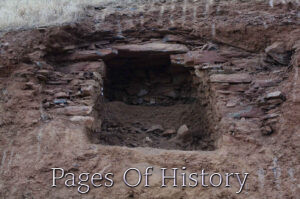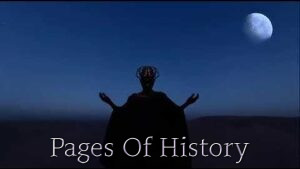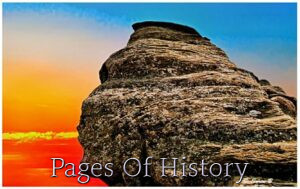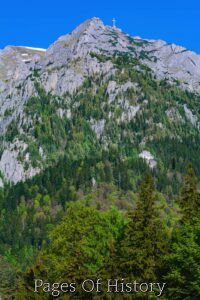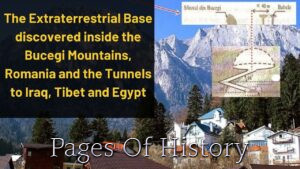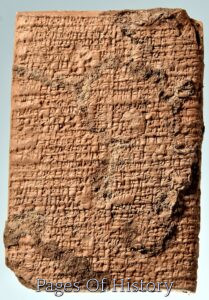The Tomb of Gilgamesh and the Discoveries in 2003 Iraq and Romania
In the Tomb of Gilgamesh, the world contains mysteries, secrets, and wonders that still elude our understanding and captivate our imagination. One of the most intriguing and enigmatic legacies of ancient civilizations is the Tomb of Gilgamesh, an epic hero and king from Sumerian mythology. The tomb has been the subject of many legends, tales, and myths for thousands of years, and its discovery in the 20th century has sparked a renewed interest and curiosity among scholars, historians, and adventurers.
The purpose of this article is to shed light on the Tomb of Gilgamesh, its significance and importance, and the events and discoveries that took place in 2003, when the USA invaded Iraq, and a remarkable discovery was made in Romania's Bucegi Mountains.
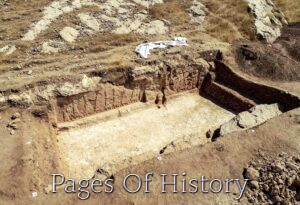
The Tomb of Gilgamesh
The Tomb of Gilgamesh is believed to be the final resting place of the legendary king and hero from Sumerian mythology. The tomb was discovered in the mid-20th century in the ancient city of Uruk, in present-day Iraq, and it is considered one of the most important archaeological finds of the modern era. The tomb is a massive structure, consisting of several chambers, tunnels, and passages. It is adorned with intricate carvings, sculptures, and inscriptions that tell the story of Gilgamesh and his quest for immortality.
The significance of the Tomb of Gilgamesh lies in its historical and cultural value, as well as its potential to reveal new information about the ancient civilizations of Mesopotamia. The tomb is one of the oldest and most complete examples of Sumerian architecture and art. It provides a glimpse into the beliefs, customs, and traditions of the Sumerian people. Moreover, the tomb is believed to hold many secrets and mysteries that have yet to be unlocked, and it has inspired countless studies, research, and adventures in search of the truth.
A Monument to the Past, A Gateway to the Unknown
In the heart of ancient Uruk, a city steeped in myth and legend, there lies a massive structure, a monument to the past, and a gateway to the unknown. The Tomb of Gilgamesh, named after the legendary king and hero of Sumerian mythology, is a treasure trove of history, art, and mystery. It is a testament to the rich and diverse culture of the ancient civilizations of Mesopotamia, and it holds the key to unlocking the secrets of our past.
The Tomb of Gilgamesh is a massive structure, consisting of several chambers, tunnels, and passages, and it is adorned with intricate carvings, sculptures, and inscriptions. The tomb is considered one of the most important archaeological finds of the modern era, and it is a symbol of the rich and diverse history of the ancient world.
The significance of the Tomb of Gilgamesh lies in its historical and cultural value, as well as its potential to reveal new information about the ancient civilizations of Mesopotamia. The tomb is one of the oldest and most complete examples of Sumerian architecture and art. It provides a glimpse into the beliefs, customs, and traditions of the Sumerian people. The tomb is also believed to hold many secrets and mysteries that have yet to be unlocked, and it has inspired countless studies, research, and adventures.
The Tomb of Gilgamesh is a symbol of the boundless potential of the human spirit, and it is a monument to the infinite reach of human curiosity. It is a reminder of the rich and diverse history of humanity, and it holds the key to unlocking the secrets of our past. It is a gateway to the unknown and a testament to the boundless potential of the human spirit.
The Tomb of Gilgamesh is a treasure trove of knowledge and wonder, waiting to be unlocked and explored. It is a symbol of the rich and diverse history of humanity, and it holds the promise of revealing truths that have been hidden for centuries. The Tomb of Gilgamesh is a monument to the past, and a gateway to the unknown, waiting to be explored and uncovered.
The Legacy of the Tomb of Gilgamesh
A reminder of the infinite potential of human curiosity and the boundless reach of the human spirit. It is a symbol of the unyielding spirit of discovery and a monument to the infinite reach of human knowledge and understanding. The tomb is a testament to the power of the human spirit, and it is a symbol of hope and wonder.
A rich and diverse tapestry of history, art, and mystery. It is a symbol of the rich and diverse history of humanity, and it holds the key to unlocking the secrets of our past. The tomb is a monument to the past, and a gateway to the unknown, waiting to be explored and uncovered.
The legacy of the Tomb of Gilgamesh is one of knowledge and wonder, of mystery and discovery. It is a symbol of the rich and diverse history of humanity, and it holds the promise of revealing truths that have been hidden for centuries. The tomb is a testament to the boundless potential of the human spirit, and it is a beacon of hope and a symbol of the infinite reach of human knowledge and understanding.
2003 Invasion of Iraq
In 2003, the United States of America invaded Iraq, under the pretext of weapons of mass destruction and the alleged links between the Iraqi government and terrorist organizations. The invasion was one of the most controversial and divisive events in modern history, and it had far-reaching consequences for Iraq, the Middle East, and the world. The invasion resulted in the overthrow of the Iraqi government, the death of hundreds of thousands of Iraqis, and the destabilization of the region.

U.S. Marines from the 2nd Battalion, 1st Marine Regiment escort captured enemy prisoners of war to a holding area in the desert of Iraq on March 21, 2003, during Operation Iraqi Freedom. Operation Iraqi Freedom is the multinational coalition effort to liberate the Iraqi people, eliminate Iraq's weapons of mass destruction, and end the regime of Saddam Hussein. DoD photo by Lance Cpl. Brian L. Wickliffe, U.S. Marine Corps.
The reasons for the invasion were complex and multifaceted, and they included political, economic, and strategic motives. The US government claimed that the invasion was necessary to protect its national security and to promote democracy and stability in the region. However, many critics argued that the invasion was driven by oil interests and imperial ambitions and that it resulted in a humanitarian disaster and a power vacuum that fueled sectarian violence and terrorism.
Discovery in Romania’s Bucegi Mountains: Uncovering the Secrets of the Past
In 2003, while the world was focused on the events in Iraq, a remarkable discovery was made in the Bucegi Mountains of Romania. The discovery was made by a team of Romanian and foreign scientists, who stumbled upon a massive underground complex, consisting of tunnels, chambers, and structures that defied explanation. The discovery was unprecedented and groundbreaking, and it sparked a wave of excitement and curiosity among researchers, archaeologists, and the public.
The significance of the discovery in the Bucegi Mountains lies in its potential to shed new light on the history of humanity and the origins of civilization. The complex is believed to be tens of thousands of years old, and it appears to have been built by a highly advanced and sophisticated civilization. The complex contains artifacts, symbols, and inscriptions that challenge conventional wisdom about human history, and it has inspired many theories and speculations about its purpose, origin, and meaning.
Amidst the chaos and turmoil of 2003, a beacon of hope and wonder shone brightly in the Bucegi Mountains of Romania. A team of intrepid scientists and researchers stumbled upon a massive underground complex, brimming with ancient secrets and untold mysteries. The discovery sent shockwaves through the world of archaeology and history, and it sparked a new era of exploration and discovery.
The discovery in Romania's Bucegi Mountains is a testament to the boundless potential of human curiosity and the unyielding spirit of discovery. The complex is a treasure trove of ancient artifacts and symbols, shrouded in mystery and steeped in intrigue. It holds the key to unlocking the secrets of our past, and it offers a glimpse into the rich and diverse history of humanity.
The complex is a labyrinth of tunnels and chambers, stretching deep into the heart of the mountain. It is adorned with intricate carvings and sculptures, and it is imbued with a sense of mystery and wonder. The complex is believed to be tens of thousands of years old, and it appears to have been built by a highly advanced and sophisticated civilization.
The significance of the discovery in Romania's Bucegi Mountains lies in the potential to rewrite the history of humanity. The artifacts and symbols within the complex challenge conventional wisdom about our past, and they offer new insights into the origins of civilization and the mysteries of the universe. The discovery has sparked a wave of excitement and curiosity, and it has inspired a new generation of researchers and explorers.
The discovery in Romania's Bucegi Mountains is a testament to the power of the human spirit, and it is a symbol of hope and wonder. It is a reminder of the infinite potential of human curiosity and the boundless reach of the human spirit, and it offers us a glimpse into the rich and mysterious history of humanity. It is a beacon of hope and a symbol of the boundless potential of the human spirit, shining bright in the heart of the Bucegi Mountains.
The Connection between the Tomb of Gilgamesh and the Discovery in Bucegi Mountains: A Mystery Unveiled
The connection between the Tomb of Gilgamesh and the discovery in the Bucegi Mountains is a subject of much debate and speculation. Some researchers argue that the two discoveries are connected and that they both reveal a hidden history of humanity, a history that has been lost or deliberately erased from our collective memory. The similarities between the two discoveries are striking, and they include the age, complexity, and sophistication of the structures, as well as the presence of symbols, inscriptions, and artifacts that are similar or identical.
The theories and speculations about the connection between the two discoveries are varied and diverse, ranging from ancient astronaut theories to esoteric and spiritual interpretations. Some researchers argue that the two discoveries are evidence of a common origin and a shared legacy and that they reveal a hidden truth about our past and our place in the universe. Others argue that the similarities are coincidental and that the two discoveries have no real connection.
In the heart of ancient Uruk and the Bucegi Mountains of Romania, two remarkable discoveries have sparked the imagination and challenged the understanding of the world. The Tomb of Gilgamesh and the discovery in Romania's Bucegi Mountains are two enigmatic legacies of the ancient world, and they have captivated the minds of researchers and explorers for decades. But what is the connection between these two wonders of the ancient world?
Others argue that the similarities are coincidental and that the two discoveries have no real connection. They believe that the similarities between the two discoveries are the result of convergent evolution and that the similarities are simply the result of the similar cultural and artistic traditions of the ancient civilizations of Mesopotamia and Romania.
Impact of the Discovery in Bucegi Mountains
The impact of the discovery in the Bucegi Mountains is far-reaching and profound, and it has challenged our understanding of history, archaeology, and humanity. The discovery has led to new debates and controversies, and it has opened new avenues for research and exploration. The implications of the discovery are many and varied, and they range from the revision of conventional history to the revelation of ancient technologies and civilizations.
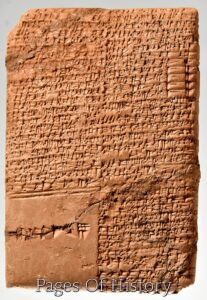
The discovery has also had a profound impact on society and the world, and it has sparked a renewed interest in the mysteries and wonders of the past. It has inspired new generations of researchers and explorers, and it has challenged our assumptions and beliefs about our origins and our place in the universe. The discovery in Bucegi Mountains is a testament to the infinite potential of human curiosity and the boundless reach of the human spirit.
The quest for knowledge is a never-ending journey, an unyielding pursuit of truth and understanding. The Tomb of Gilgamesh and the discovery in the Bucegi Mountains are two of the many wonders of the ancient world, waiting to be unlocked and explored. They are a reminder of the infinite potential of human curiosity and the boundless reach of the human spirit.
Conclusion
The Tomb of Gilgamesh and the discovery in the Bucegi Mountains are two remarkable and enigmatic legacies of the ancient world that still captivate our imagination and challenge our understanding. The tomb and the discovery are both symbols of the rich and diverse history of humanity, and they hold the promise of unlocking secrets and revealing truths that have been hidden for centuries.
In this article, we have explored the significance and importance of the Tomb of Gilgamesh, the events and consequences of the 2003 invasion of Iraq, and the groundbreaking discovery in Romania's Bucegi Mountains. We have also considered the connection between the two discoveries, the impact of the discovery in the Bucegi Mountains, and the implications for our understanding of history, archaeology, and the world.
In conclusion, the Tomb of Gilgamesh and the discovery in the Bucegi Mountains are treasures of knowledge and wonder, waiting to be unlocked and explored. They are a reminder of the infinite potential of human curiosity and the boundless reach of the human spirit, and they offer us a glimpse into the rich and mysterious history of humanity.
FAQs
- What is the Tomb of Gilgamesh?
The Tomb of Gilgamesh is the final resting place of the legendary king and hero from Sumerian mythology. It was discovered in the mid-20th century in the ancient city of Uruk, in present-day Iraq, and it is considered one of the most important archaeological finds of the modern era. The tomb is a massive structure, consisting of several chambers, tunnels, and passages, and it is adorned with intricate carvings, sculptures, and inscriptions.
- Why was the 2003 invasion of Iraq controversial?
The 2003 invasion of Iraq was controversial because of the reasons for the invasion, the consequences of the invasion, and the motives of the US government. The invasion was justified by the US government as necessary to protect its national security and promote democracy and stability in the region. However, many critics argued that the invasion was driven by oil interests and imperial ambitions and that it resulted in a humanitarian disaster and a power vacuum that fueled sectarian violence and terrorism.
- What was discovered in Romania's Bucegi Mountains in 2003?
In 2003, a team of Romanian and foreign scientists discovered a massive underground complex in the Bucegi Mountains of Romania. The complex consists of tunnels, chambers, and structures that are tens of thousands of years old, and it appears to have been built by a highly advanced and sophisticated civilization. The discovery has challenged conventional wisdom about human history and has inspired many theories and speculations about its purpose, origin, and meaning.
- What is the connection between the Tomb of Gilgamesh and the discovery in the Bucegi Mountains?
The connection between the Tomb of Gilgamesh and the discovery in the Bucegi Mountains is a subject of much debate and speculation. Some researchers argue that the two discoveries are connected and that they both reveal a hidden history of humanity. Others argue that the similarities are coincidental and that the two discoveries have no real connection.
- What is the impact of the discovery in the Bucegi Mountains?
The impact of the discovery in the Bucegi Mountains is far-reaching and profound, and it has challenged our understanding of history, archaeology, and humanity. The discovery has led to new debates and controversies, and it has opened new avenues for research and exploration. The implications of the discovery are many and varied, and they range from the revision of conventional history to the revelation of ancient technologies and civilizations.
- How has the discovery in Bucegi Mountains affected society and the world?
The discovery in Bucegi Mountains has had a profound impact on society and the world, and it has sparked a renewed interest in the mysteries and wonders of the past. It has inspired new generations of researchers and explorers, and it has challenged our assumptions and beliefs about our origins and our place in the universe. The discovery is a testament to the infinite potential of human curiosity and the boundless reach of the human spirit.
- What is the significance of the Tomb of Gilgamesh?
The significance of the Tomb of Gilgamesh lies in its historical and cultural value, as well as its potential to reveal new information about the ancient civilizations of Mesopotamia. The tomb is one of the oldest and most complete examples of Sumerian architecture and art. It provides a glimpse into the beliefs, customs, and traditions of the Sumerian people. The tomb is also believed to hold many secrets and mysteries that have yet to be unlocked, and it has inspired countless studies, research, and adventures.
- Why was the 2003 invasion of Iraq necessary, according to the US government?
The 2003 invasion of Iraq was necessary, according to the US government, to protect its national security and to promote democracy and stability in the region. The US government claimed that the invasion was necessary because of the presence of weapons of mass destruction and the alleged links between the Iraqi government and terrorist organizations.
- What are the consequences of the 2003 invasion of Iraq?
The consequences of the 2003 invasion of Iraq were far-reaching and profound, and they included the overthrow of the Iraqi government, the death of hundreds of thousands of Iraqis, and the destabilization of the region. The invasion resulted in sectarian violence, terrorism, and a power vacuum that has had long-lasting effects on Iraq and the Middle East.
- What is the significance of the discovery in Romania's Bucegi Mountains?
The significance of the discovery in Romania's Bucegi Mountains lies in its potential to shed new light on the history of humanity and the origins of civilization. The complex is believed to be tens of thousands of years old, and it appears to have been built by a highly advanced and sophisticated civilization. The complex contains artifacts, symbols, and inscriptions that challenge conventional wisdom about human history, and it has inspired many theories and speculations about its purpose, origin, and meaning.
The Tomb of Gilgamesh and the discovery in the Bucegi Mountains are two of the many wonders of the ancient world, waiting to be unlocked and explored. They are a reminder of the infinite potential of human curiosity and the boundless reach of the human spirit, and they offer us a glimpse into the rich and mysterious history of humanity.
References: Unlocking the Secrets of the Past
The quest for knowledge is a journey of discovery, and the Tomb of Gilgamesh and the discovery in the Bucegi Mountains are two of the many wonders of the ancient world, waiting to be unlocked and explored. To further delve into the rich and diverse history of these two wonders, we present five references to inspire and guide you on your journey of discovery.
- "The Epic of Gilgamesh" - This ancient Sumerian epic poem is the earliest known work of literature, and it tells the story of the legendary king and hero, Gilgamesh. It provides a glimpse into the beliefs, customs, and traditions of the Sumerian people, and it offers a unique perspective on the ancient world.
- "The History of Mesopotamia" - This comprehensive guide to the ancient civilization of Mesopotamia provides a detailed overview of the history, culture, and achievements of this fascinating and enigmatic civilization. From the rise of the Sumerian cities to the fall of the Babylonian empire, this book is a must-read for anyone interested in the ancient world.
- "The Secrets of the Bucegi Mountains" - This captivating book explores the discovery in Romania's Bucegi Mountains and the mysterious underground complex that was found there. It provides a detailed look at the artifacts, symbols, and inscriptions that have been uncovered, and it offers new insights into the rich and diverse history of humanity.
- "The Archaeology of Mesopotamia" - This comprehensive guide to the archaeology of Mesopotamia provides a detailed overview of the many ancient sites and monuments that have been discovered in this region, including the Tomb of Gilgamesh. It offers a unique perspective on the rich and diverse history of this fascinating civilization, and it provides a glimpse into the ancient world.
- "The Bucegi Mountains: A Journey into the Unknown" - This fascinating guide to the Bucegi Mountains of Romania explores the discovery in the mountains and the mysterious underground complex that was found there. It provides a detailed look at the history, culture, and beliefs of the ancient civilizations that lived in the region, and it offers new insights into the rich and diverse history of humanity.
These five references are just the beginning of your journey of discovery, and they offer a wealth of information and inspiration to unlock the secrets of the past. Whether you are a historian, researcher, or simply a lover of the ancient world, these references will guide you on your quest for knowledge and understanding.
Video: The Tomb of Gilgamesh possible found


